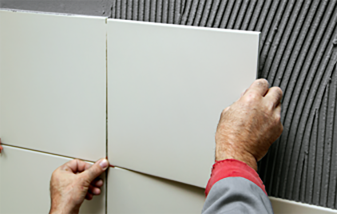
Sep . 24, 2024 08:34 Back to list
How Hydroxyethyl Cellulose is Produced Through Chemical Processes and Techniques
Hydroxyethyl cellulose (HEC) is a non-ionic, water-soluble polymer derived from cellulose, which is a natural polymer found in the cell walls of plants. HEC has a wide range of applications, particularly in the fields of pharmaceuticals, cosmetics, and construction materials, due to its excellent thickening, binding, and film-forming properties. Understanding how HEC is made can provide insights into its unique characteristics and functionalities.
The production of hydroxyethyl cellulose begins with the extraction of cellulose from natural sources, such as wood pulp or cotton. This cellulose serves as the base material for the synthesis of HEC. The extracted cellulose undergoes a process called etherification, which introduces hydroxyethyl groups into the cellulose backbone. The etherification reaction is typically carried out in aqueous or alcoholic solutions using ethylene oxide as the etherifying agent.
To begin the process, cellulose is first prepared by dissolving it in an alkaline solution, which helps to swell the cellulose fibers and make them more reactive. The alkali treatment also leads to the formation of a cellulose alkoxide, which is necessary for the subsequent etherification step. Once the cellulose is adequately prepared, ethylene oxide is added to the solution. The reaction conditions, including temperature, pressure, and the concentration of ethylene oxide, are carefully controlled to ensure a high degree of substitution while avoiding degradation of the cellulose.
how is hydroxyethyl cellulose made

After the etherification reaction is complete, the resulting hydroxyethyl cellulose is precipitated from the solution, typically using a non-solvent such as ethanol or isopropanol. This step helps to purify the product by removing any unreacted materials and byproducts from the reaction. The precipitated HEC is then filtered, washed, and dried to obtain the final product.
Once dried, HEC can be milled into a fine powder or further processed into the desired form for commercial applications. The degree of substitution (the number of hydroxyethyl groups per glucose unit of cellulose) can be controlled during the synthesis process, which allows manufacturers to tailor the properties of HEC for specific applications. For instance, a higher degree of substitution results in increased solubility and viscosity, making it suitable for use in thicker formulations, while a lower degree yields a product with different hydrocolloidal properties.
In summary, the production of hydroxyethyl cellulose is a meticulous process that transforms natural cellulose into a versatile polymer through etherification. The balance of reaction conditions during this process determines the final characteristics of HEC, allowing it to meet diverse needs across various industries. The growing interest in HEC, owing to its eco-friendly origins and multifunctional applications, underscores its importance in contemporary materials science.
-
Versatile Hpmc Uses in Different Industries
NewsJun.19,2025
-
Redispersible Powder's Role in Enhancing Durability of Construction Products
NewsJun.19,2025
-
Hydroxyethyl Cellulose Applications Driving Green Industrial Processes
NewsJun.19,2025
-
Exploring Different Redispersible Polymer Powder
NewsJun.19,2025
-
Choosing the Right Mortar Bonding Agent
NewsJun.19,2025
-
Applications and Significance of China Hpmc in Modern Industries
NewsJun.19,2025







